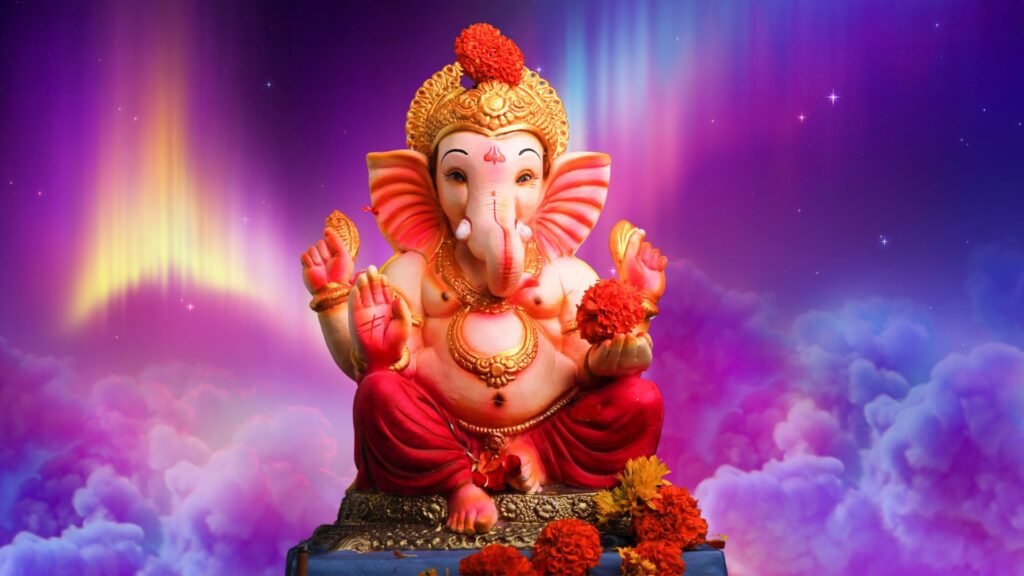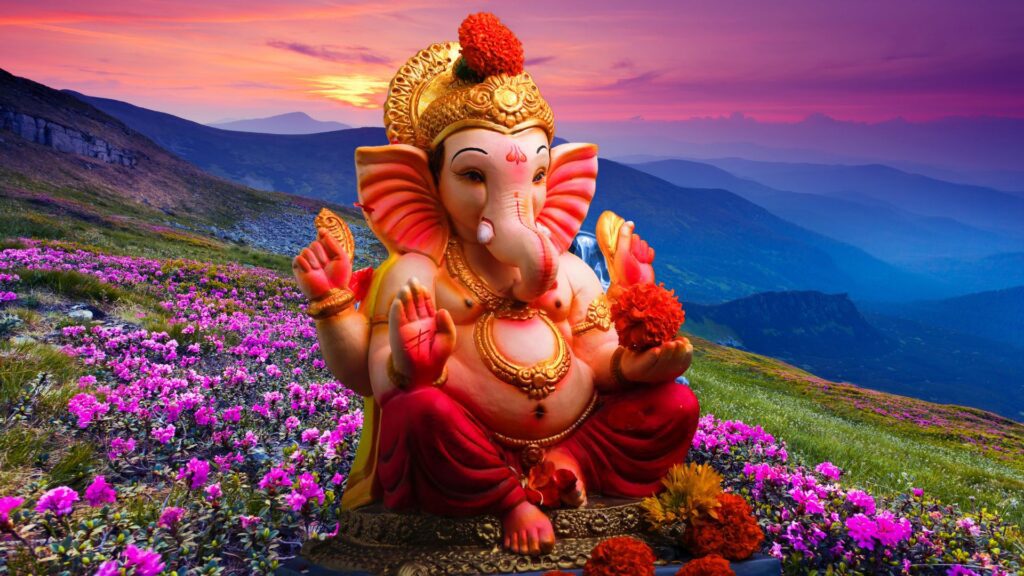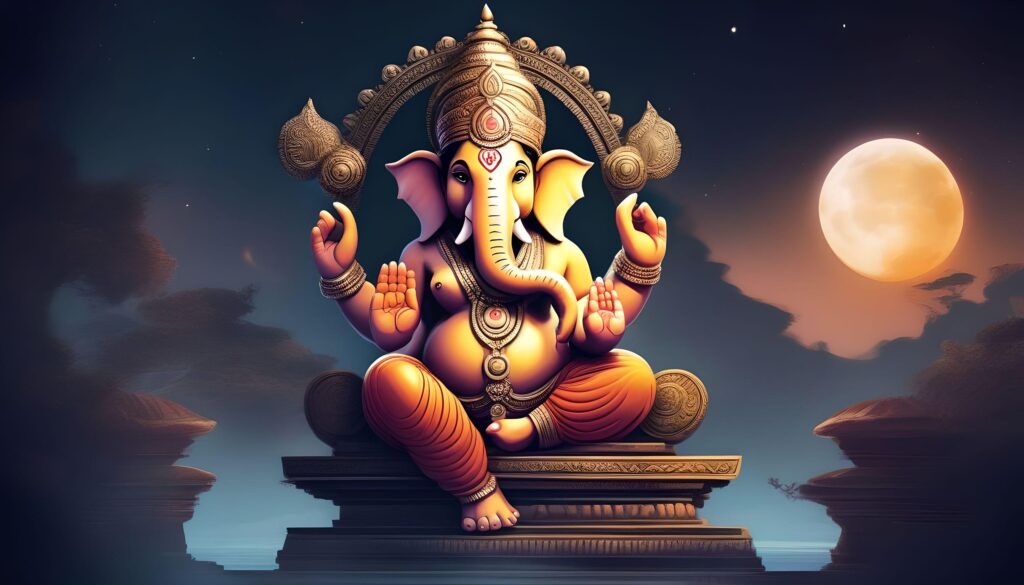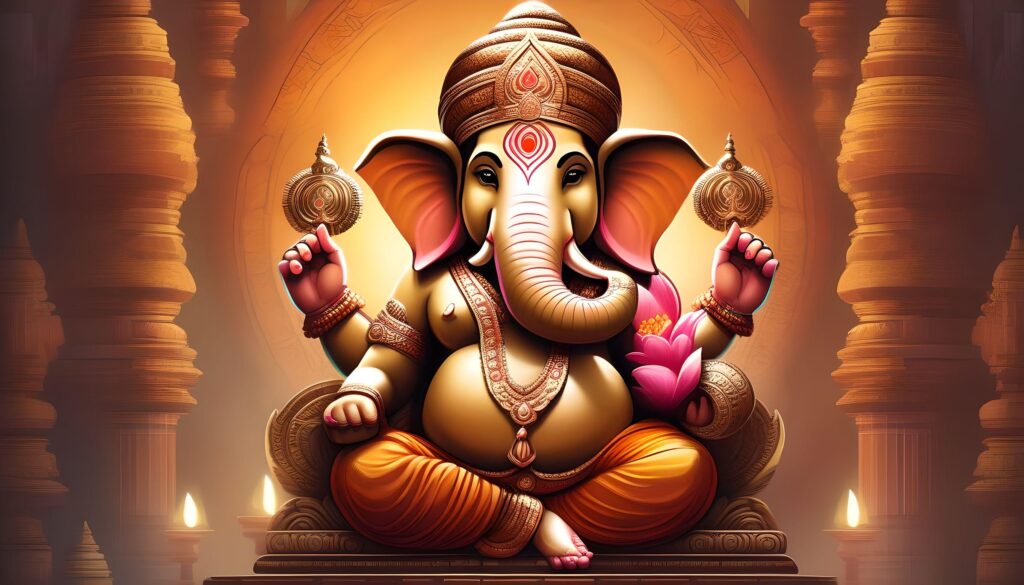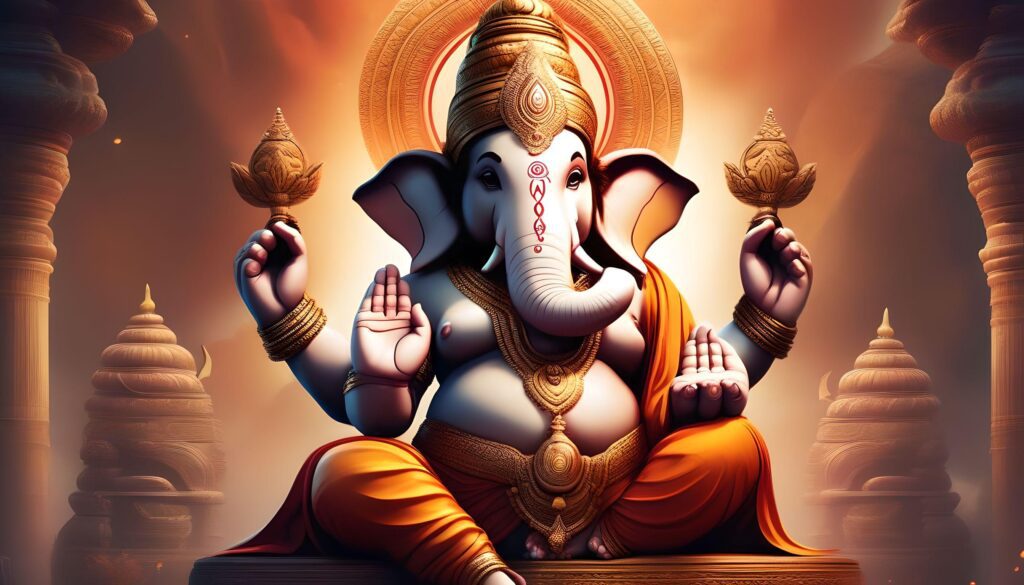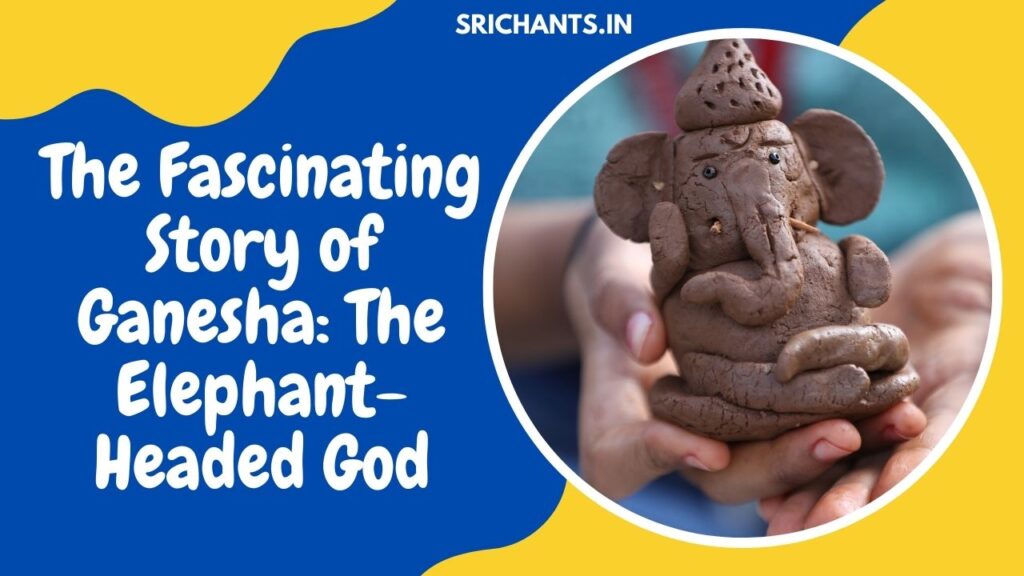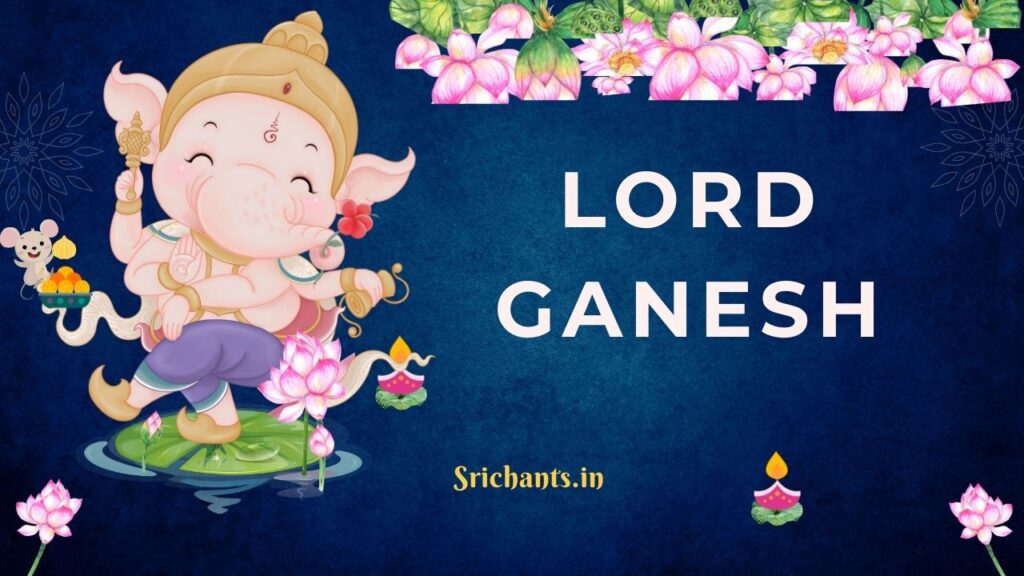Ganesh The Elephant God : Ganesh God Symbol
Introduction
Lord Ganesha is a notable figure in Hinduism, as he is a symbol of good fortune, prosperity, and wisdom. He is revered by millions of individuals worldwide as one of the most prominent gods in the religion. Ganesha’s elephant cranium is a unique characteristic that is imbued with profound symbolism and significance. This article will investigate the importance of Lord Ganesha’s elephant form and the diverse characteristics it symbolizes.
The Symbolism of Ganesha’s Elephant Head
Ganesha’s elephant head is associated with numerous symbolic interpretations, each of which symbolizes a distinct aspect of his divine nature. Let us explore the symbolism that underpins Ganesha’s elephant form:

Authority, Endurance, Strength, and Courage
The elephant-head of Ganesha is a representation of courage, strength, endurance, and authority. The elephant is renowned for its strength and fortitude, which enable it to surmount obstacles and confront challenges with unwavering resolve. Ganesha’s elephant head functions as a reminder to incorporate these qualities into our lives.
Single-Minded Focus
The significance of sustaining a singular focus is symbolized by the small eyes of Ganesha. Ganesha instills in us the importance of dedication and concentration in a world that is rife with distractions.
Keen Listening and Prayer
The capacity to attentively attend to all prayers is symbolized by Ganesha’s large ears. Ganesha is reputed to listen attentively to the cries of his devotees and fulfill their desires in his capacity as the remover of obstacles. His large ears serve as a reminder to be attentive listeners and to offer our petitions with genuineness.
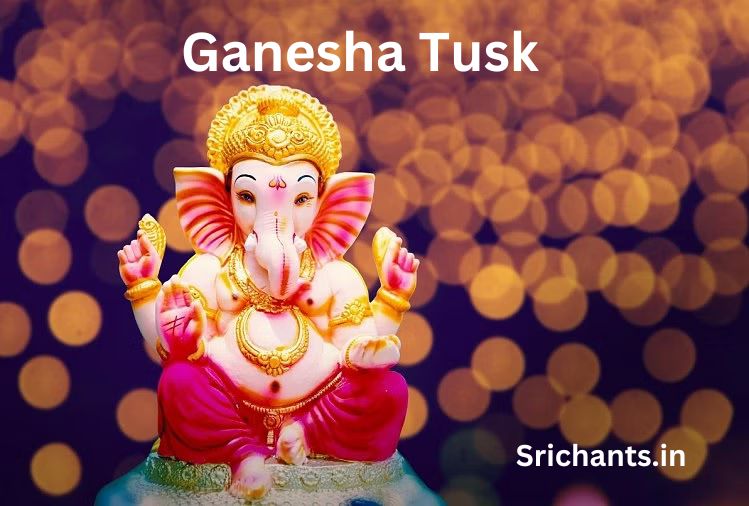
Generosity and Total Acceptance
Ganesha’s expansive abdomen symbolizes unconditional acceptance and generosity. Ganesha’s large belly is a symbolic representation of his capacity to accept all emotions and experiences without judgment, much like a belly can accommodate a substantial quantity of food. He instills in us the significance of accepting and embracing others with an open heart.
Mind, Intellect, Ego, and Self
The mind, intellect, ego, and self are symbolized by Ganesha’s four limbs. These components of human existence are intricately linked. Ganesha, with his four limbs, serves as a reminder to maintain equilibrium and foster harmony within ourselves.
Protection and Endless Giving
The upraised hand of Ganesha symbolizes protection, indicating his duty as a guardian and protector of his devotees. It is symbolic of his selflessness and willingness to bestow blessings upon those who seek his guidance that his hand is lowered, symbolizing infinite giving.
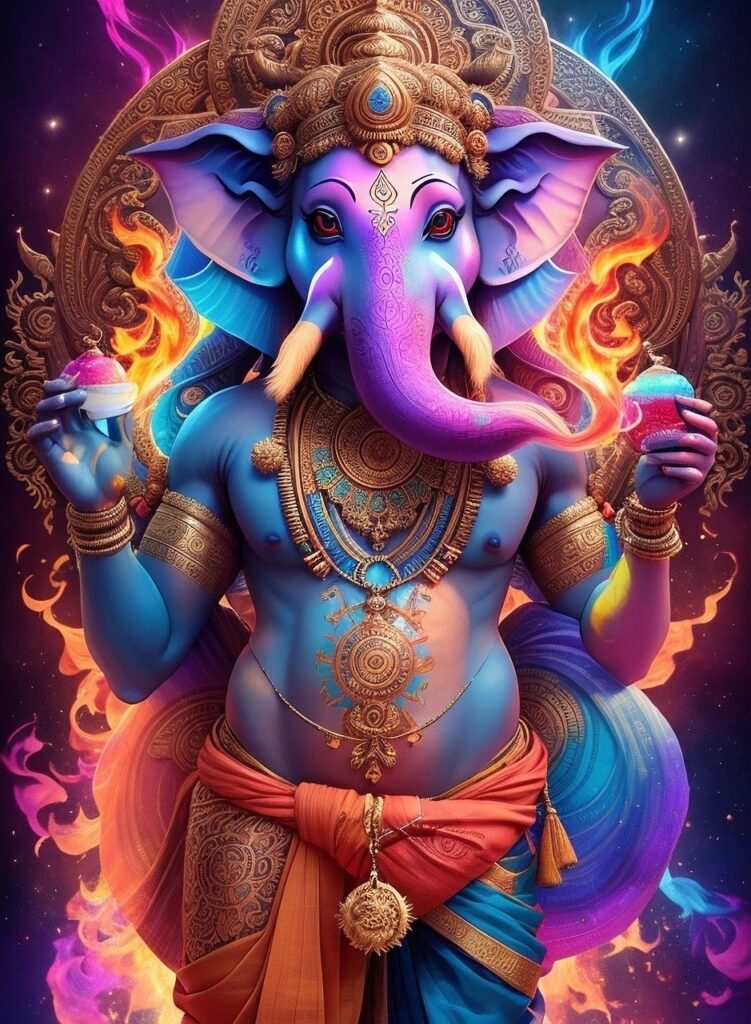
One-Pointedness
Ganesha’s sole tusk is indicative of her singular focus. This is a representation of the capacity to maintain concentration on a single goal and direct our energy toward its pursuit. Ganesha motivates us to cultivate this attribute in our endeavors.
Symbolism of Ganesha’s Vehicle: The Mouse
The symbolism of Ganesha’s selection of a tiny mouse as his vehicle is significant. The mouse is a representation of the capacity to nibble away at the ropes that confine, much like Ganesha can remove obstacles from our lives. The mouse also symbolizes the power of mantras, which have the ability to penetrate strata of ignorance and guide us to a higher level of understanding.
The ‘Ankusa’ and ‘Paasa’
In his hands, Ganesha caries the ‘Paasa’ (a knot for binding) and the ‘Ankusa’ (a sharpened pointed hook used to prod movement). The ‘Paasa’ symbolizes control, while the ‘Ankusa’ denotes awakening. Collectively, they represent the equilibrium between control and awakening, instructing us to apply our knowledge and wisdom with accountability.
The Mythological Birth Story of Lord Ganesha
The origin story of Lord Ganesha is of great importance and contributes to the divine aura that envelops him. The narrative of his birth that is most frequently recounted is as follows:
Parvati, the consort of Lord Shiva, aspired to have a child. Shiva, on the other hand, was not in accord. Parvati was resolute in her pursuit of her aspiration, and she produced Ganesha from the earth and conferred life upon him. While she took a bath, she assigned Ganesha the responsibility of securing the home.
When Shiva attempted to enter the residence upon his return, Ganesha, in accordance with Parvati’s directives, obstructed his way. Ganesha’s true identity was unknown to Shiva, who became enraged and engaged in a battle with him. Shiva decapitated Ganesha in a fit of rage.
Shiva felt remorse for his actions and endeavored to make amends upon discovering the truth. He directed his assistants to deliver the head of the first living being they encountered, which was oriented north. The assistants returned with the head of an elephant, which Shiva affixed to Ganesha’s body, thereby reviving him.
The narrative of Ganesha’s birth imparts invaluable teachings. It underscores the significance of acknowledging and resolving our errors, as Shiva did. It also represents Ganesha’s capacity to surmount adversity and emerge more resilient, embodying the virtues of humility, wisdom, and resilience.
The Essence and Worship of Lord Ganesha
Ganesha is regarded for his wisdom, prosperity, and capacity to eliminate impediments from one’s path. He is a representation of the divine energy that both manifests and dissolves all matter in the universe. The act of worshiping Lord Ganesha has a multitude of advantages and fosters the development of positive qualities within us. We will investigate several methods of honoring and worshiping Lord Ganesha:
Chanting Ganesha Mantras and Bhajans
The auspicious energies of Lord Ganesha can be invoked by reciting his mantras and bhajans. These devotional songs and chants facilitate a connection with Ganesha’s divine presence and invite his favors. One of the most frequently recited mantras is “Om Gan Ganpataye Namaha,” which can be chanted with a mala (necklace) with 108 beads.
Ganapati Atharvashirsha
Ganapati Atharvashirsha is a potent mantra from the Vedas that summons the energy of Ganesha. The mind is cleansed and meditation is made effortless by listening to or reciting this mantra. It enhances wisdom, eliminates obstacles, and removes negativity. This chant is particularly well-suited for meditation, as it can be practiced at a slow pace and with distinct pronunciation.
Ganesh Puja and Homam
It is a common practice to perform Ganesh puja and homam (fire ritual) in order to obtain Ganesha’s blessings and eliminate impediments from one’s existence. The chanting of mantras is accompanied by the offering of petitions, flowers, fruits, and other sacred items to the deity during these rituals. The transformative power of Ganesha’s blessings is symbolized by the sacred fire.
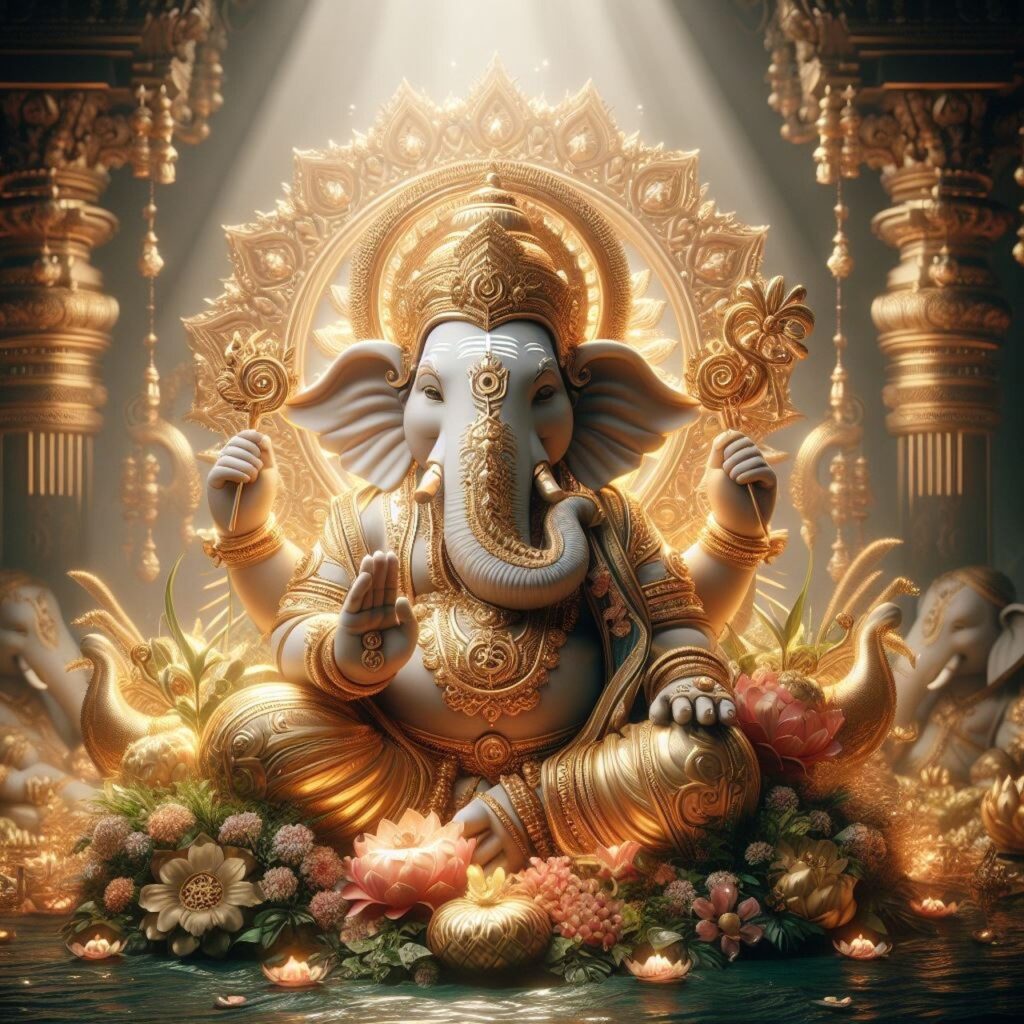
Ganesh Festivals
The most significant festival associated with Lord Ganesha is Ganesh Chaturthi. This festival is celebrated with immense grandeur, particularly in Maharashtra, and involves the installation of Ganesha idols in homes and public spaces. This is followed by cultural festivities, devotional chanting, and prayers. Another significant celebration is Ganesh Jayanti, which is observed on the Chaturthi of the Hindu calendar month Magha.
Spiritual Significance of Ganesha Worship
The act of worshiping Lord Ganesha transcends religious rituals. It also possesses a profound spiritual significance. Ganesha is the deity who preside over consciousness, guiding us to recognize our authentic selves. Before engaging in any spiritual practice or ceremony, it is beneficial to invoke Ganesha’s presence in order to arouse our consciousness and establish a connection with the formless divinity that resides within us.
The Cultural and Global Influence of Lord Ganesha
Ganesha’s influence is extensive and transcends the confines of Hinduism. His appeal has surpassed religious, national, and sectoral limitations. Ganesha carvings and statues are located in a variety of nations, such as Afghanistan, Indonesia, Sumatra, Laos, Cambodia, Thailand, Burma, and Java. Additionally, one of the earliest known Ganesha statues was discovered in Afghanistan.
In addition to his religious significance, Ganesha is of great cultural significance. Throughout various cultures, he is honored in the realms of art, literature, music, and dance. Ganesha’s universal appeal and the profound impact he has left on humanity are exemplified by his presence in these diverse arenas.
Conclusion
Lord Ganesha’s elephant form is imbued with profound symbolism, as it symbolizes significant values such as wisdom, acceptance, endurance, authority, and focus. His birth story imparts invaluable lessons on the importance of rectifying errors and surmounting adversity. The act of worshiping Lord Ganesha by chanting his mantras, performing puja and homam, and commemorating festivals results in the cultivation of positive qualities, the removal of obstacles, and the receipt of blessings.
Ganesha’s influence is global, as evidenced by his presence in a variety of countries and cultures. His significance transcends religious boundaries due to his universal appeal. Lord Ganesha is a revered figure in Hinduism who continues to motivate millions with his wisdom, prosperity, and capacity to assist them on their spiritual journeys.

